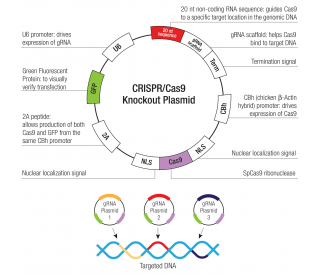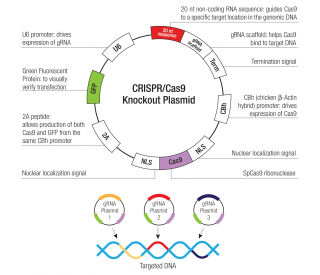详细说明
Species Reactivity
Human
Specificity
Detects human Caspase-3 in direct ELISAs.
Source
Recombinant Monoclonal Rabbit IgG Clone # 1112I
Purification
Protein A or G purified from cell culture supernatant
Immunogen
Human Caspase-3 synthetic peptide
Accession # P42574Formulation
Lyophilized from a 0.2 μm filtered solution in PBS with Trehalose. *Small pack size (SP) is supplied as a 0.2 µm filtered solution in PBS.
Label
Unconjugated
Applications
Recommended
ConcentrationSample
Immunocytochemistry
1-25 µg/mL
See below
Please Note: Optimal dilutions should be determined by each laboratory for each application. are available in the Technical Information section on our website.
Data Examples
Immunocytochemistry | Caspase‑3 in Jurkat Human Cell Line. Caspase‑3 was detected in immersion fixed Jurkat human acute T cell leukemia cell line treated with Staurosporine using Rabbit Anti-Human Caspase‑3 Monoclonal Antibody (Catalog # MAB7071) at 1 µg/mL for 3 hours at room temperature. Cells were stained using the NorthernLights™ 557-conjugated Anti-Rabbit IgG Secondary Antibody (red; Catalog # ) and counterstained with DAPI (blue). Specific staining was localized to cytoplasm. View our protocol for . |
Preparation and Storage
Reconstitution
Reconstitute at 0.5 mg/mL in sterile PBS.
Shipping
The product is shipped at ambient temperature. Upon receipt, store it immediately at the temperature recommended below. *Small pack size (SP) is shipped with polar packs. Upon receipt, store it immediately at -20 to -70 °C
Stability & Storage
Use a manual defrost freezer and avoid repeated freeze-thaw cycles.
12 months from date of receipt, -20 to -70 °C as supplied.
1 month, 2 to 8 °C under sterile conditions after reconstitution.
6 months, -20 to -70 °C under sterile conditions after reconstitution.
Background: Caspase-3
Caspase-3 (Cysteine-aspartic acid protease 3/Casp3; also Yama, apopain and CPP32) is a 29 kDa heterodimer that belongs to the peptidase C14A family of enzymes. It is widely expressed and considered to be the major executioner caspase in the apoptotic cascade. Human procaspase-3 is a 32 kDa, 277 amino acid (aa) protein and is normally an inactive homodimer. Following cell stress/activation, procaspase-3 undergoes proteolysis to generate an N-terminal 148 aa p17/17 kDa subunit (aa 29-175), plus a 102 aa C-terminal p12/12 kDa subunit. These subunits noncovalently heterodimerize, and associate with another p17/p12 heterodimer to form an active enzyme. There is one potential variant that shows an alternative start site nine aa upstream of the standard start site coupled with a 21 aa substitution for aa 162-277. Over aa 29-175, human and mouse caspase-3 share 87% aa identity.
Entrez Gene IDs:
836 (Human); 12367 (Mouse)
Alternate Names:
Apopain; apoptosis-related cysteine protease; CASP3; CASP-3; caspase 3, apoptosis-related cysteine peptidase; Caspase3; Caspase-3; CPP32; CPP-32; CPP32B; CPP32SREBP cleavage activity 1; Cysteine protease CPP32; EC 3.4.22; EC 3.4.22.56; LICE-1; PARP cleavage protease; procaspase3; Protein Yama; SCA-1; YAMA







![Anti-CARD11 antibody [EPR2557] 100µl](https://yunshiji.oss-cn-shenzhen.aliyuncs.com/202407/25/ryuecwsu03m.jpg)
![Anti-CARD11 antibody [EPR2557] 40µl](https://yunshiji.oss-cn-shenzhen.aliyuncs.com/202407/25/0l4lvuuesv1.jpg)

![Anti-Caspase-9 antibody [E23] 100µl](https://yunshiji.oss-cn-shenzhen.aliyuncs.com/202407/25/3jnd4412gqi.jpg)

![Anti-CKS2 antibody [EPR7946(2)] 100µl](https://yunshiji.oss-cn-shenzhen.aliyuncs.com/202407/25/cfdt44gkqre.jpg)



 粤公网安备44196802000105号
粤公网安备44196802000105号